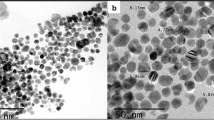Abstract.
The purpose of this study was to evaluate the radioprotective potential of amifostine on the salivary glands of rats with respect to the acute and late effects. The head and neck area of WAG/RijH rats was irradiated with 60Co-γ rays (60 Gy/30f for 6weeks). Amifostine (250 mg/m2 body surface) or an equal volume of physiologic saline was applied intravenously 15 min before each irradiation. In the course of treatment the salivary glands were examined histopathologically. Body weight was measured sequentially during irradiation. A cytoprotective effect of amifostine on the acute toxicity of salivary glands could not be detected under fractionated irradiation. However, late effects such as fibrosis and necrosis of the glands 6 months after irradiation were less developed in the amifostine group. The weight loss of the amifostine-treated animals during fractioned irradiation was higher than in the irradiated group. Amifostine has a significant cytoprotective effect on the late toxicity of irradiated salivary glands. However, the acute toxicity of the glands during radiotherapy cannot be reduced.
Similar content being viewed by others
Author information
Authors and Affiliations
Additional information
Electronic Publication
Rights and permissions
About this article
Cite this article
Sagowski, C., Wenzel, S., Metternich, F. et al. Studies on the radioprotective potency of amifostine on salivary glands of rats during fractionated irradiation: acute and late effects. Eur Arch Otorhinolaryngol 260, 42–47 (2003). https://doi.org/10.1007/s00405-002-0496-4
Received:
Accepted:
Issue Date:
DOI: https://doi.org/10.1007/s00405-002-0496-4




